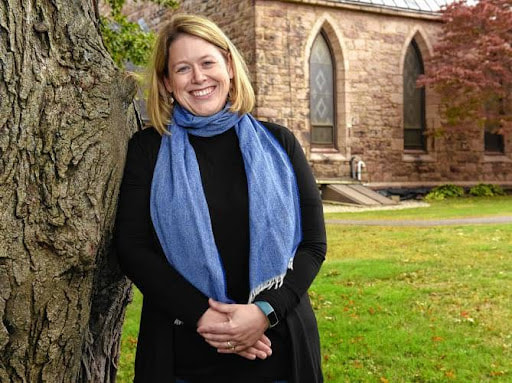|
Dear Friends of Saints James and Andrew,
The Vestry recently met to discuss our remaining local Covid-19 era protocols; all diocesan protocols having previously been rescinded. It was concluded that we will rescind such protocols, but we want to invite the community to reflect on the practice of communion. We will no longer require windows and doors to be open for worship. When the weather allows, we will open them for fresh air to circulate. Ushers will collaborate with the Rector on Sunday mornings, or the Wardens, in her absence. We will continue to use a Flexible Masking Policy as a way to reduce respiratory virus transmission. While the policy was created as a result of the Covid-19 Pandemic, we’ve learned it's a healthy practice in general. With regard to masks, the Celebrant and Lay Eucharistic Ministers will no longer be required to mask for distribution of communion and healing prayers. Moving forward it will be a personal decision for each person. With regard to communion: The Church has long held that if you take only one form of Communion (either the bread or the wine) you are fully communed; thus no one should ever feel pressured to receive the wine. For those who would like to receive the wine, there have historically been two ways: drinking from the common cup and intinction (the dipping of the bread into the common cup). When we resumed communion in 2022, drinking from the common cup was permitted, but intinction was not. Effective immediately, we will permit intinction, though the practice is discouraged for two reasons. First, intinction has a complex social and theological history. Here is a brief history of intinction, largely gathered from Daniel Sack’s Whitebread Protestants: Food and Religion in American Culture:
Second, science has much to tell us about the common cup and the practice of intinction. The Episcopal Diocese of Massachusetts summarized this science well in a letter from Bishop Gates, found here:
We would like to invite each of us to reflect on our own practice of receiving communion. Why do we abstain, intinct, or drink from the common cup? Is it because a caregiver or priest once told us ‘this is the way’? What practice draws us closer to God and the community we worship alongside? What helps us to grow in faith? There is no ‘wrong’ answer, particularly if we are making our decision with intention and care. We welcome your reflections and thoughts. Please do not hesitate to be in touch with our clergy and vestry leaders. Peace, Rev. Heather J. Blais, Rector On behalf of Saints James and Andrew Vestry |
Categories
All
Archives
April 2024
|

 RSS Feed
RSS Feed